Home / Resources
Resources
Discover a Wealth of BPM Knowledge and Expertise at BPMInstitute.org!
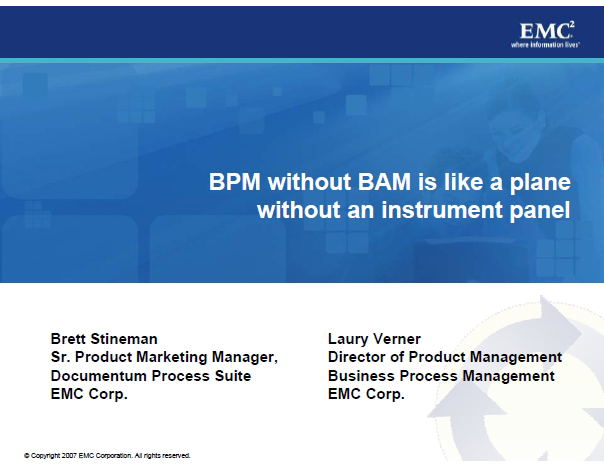
BPM without BAM is like a plane without an instrument panel
Business Activity Monitoring (BAM) has become an essential technology component of a Business Process Management (BPM) solution. After all, what could be more helpful than viewing real-time information about process performance? How about the ability to automatically trigger corrective actions? Or, better yet, being able to diagnose issues before they take place? Just as a pilot wouldn’t fly a plane without being able to view, diagnose and correct its systems, you shouldn’t consider automating processes without being able to have a complete understanding of how they
Modeling the True Business Architecture
It has been said that one picture is worth a thousand words, but the veracity of this ancient maxim is radically understated when it comes to modeling the business architecture. Indeed, a well-modeled business architecture is worth its weight in gold, not to mention market share.

A Step Towards Revolution
![]()
This article originally appeared in the members-only quarterly BPM Strategies Magazine. Join today to receive your own copy.

SOA Watch: Is Your Enterprise Architecture Healthy?
Working directly on SOA projects, as an independent, I’m exposed to many more organizations than when I was building technology. As such, I see some common patterns or issues emerging.
The largest and most disturbing issue is the fact that there seems to be a huge chasm between the traditional enterprise architecture crowd and those looking at the value of SOA. Indeed, enterprise architecture, as a notion, has morphed from an approach for the betterment of corporate IT to a management practice, at least for some.
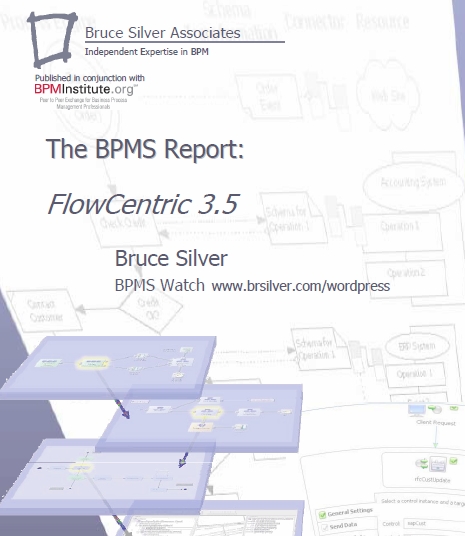
FlowCentric 3.5
Established in 2000, FlowCentric is a small privately held BPMS supplier headquartered in the UK, with regional entities serving Europe, North America, Middle East and Africa, and Asia/Pacific. Most product development is done in South Africa. The FlowCentric product is based on and heavily leverages Microsoft’s evolving BPM platform based on .Net and Windows services. FlowCentric is a Microsoft Gold Certified Partner with ISV, Business Process and Integration and Information Worker competencies.
The FlowCentric BPMS is intended to be used by business analysts and consultants without programming. The FlowCentric solution provides a single user interface that is simple enough that even unskilled staff can use easily. The product is primarily sold through channel partners, and is aimed at “supporting partner consultants to define, develop, deploy and maintain composite process applications, to extend the functionality of ERP, CRM and other business management applications.”

Take Your Visio® based Business Process Analysis Project to the Next Level
Are you engaged in or investigating an enterprise wide business process analysis initiative? Need to convince your Visio process modelers to migrate to a more structured environment?
The success of your business process analysis and enterprise architecture depends on the quality of your models. But if your users are modeling without structure and controls, then their models are probably unrelated, non-standard and disparate. Many organizations use Microsoft Visio®, a convenient solution for part-time business modelers.
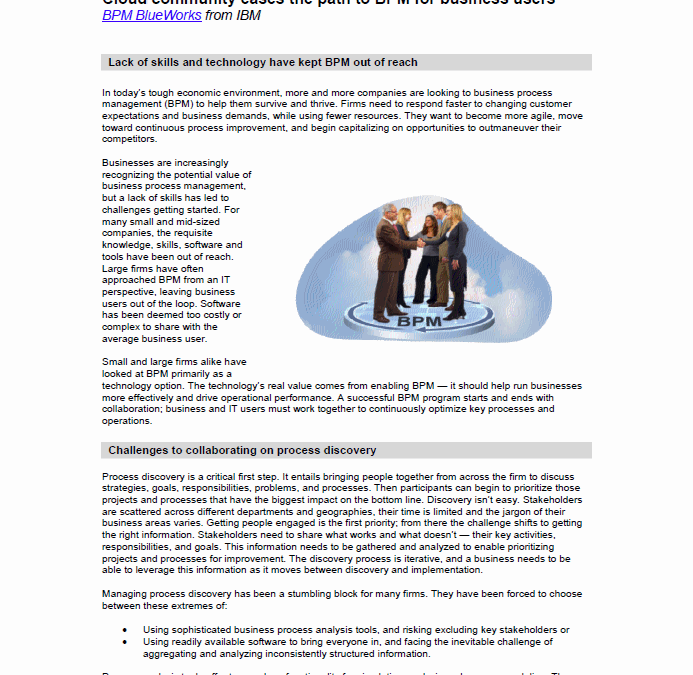
Getting Started with Business Process Management
The set of ideas, tools, and techniques that deal with business processes, known in short as Business Process Management (BPM), has been around for a couple of decades. Even though forward-thinking professionals in business and IT recognize the importance of BPM, it does not get the mainstream attention it deserves. Large-scale ERP and client/server implementations absorb the attention of IT departments and distract the innovators.

Integrating Business Processes in a Business Architecture
Many corporations have successfully completed one or more Business Process Management (BPM) initiatives.
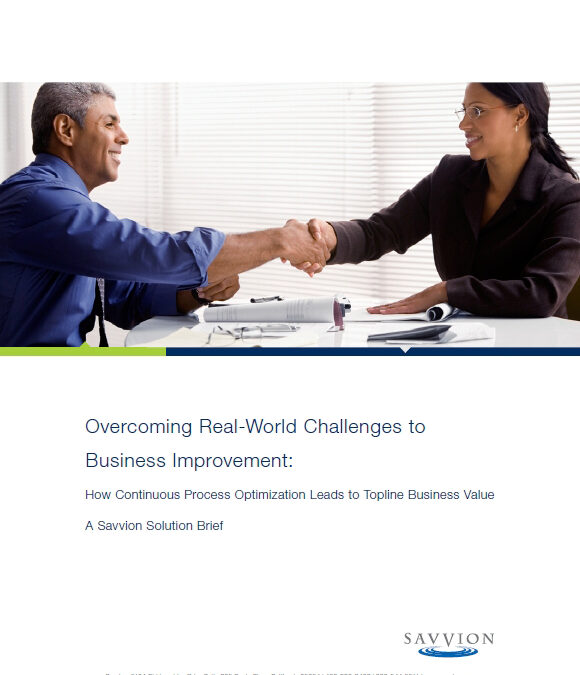
Process Optimization for the Real World
Many Business Process Management (BPM) vendors talk about how their software allows you to optimize processes with just the click of a button. It’s a nice dream to believe in this “Nirvana” extending to processes outside your immediate scope of control, but the reality is that most people find that their corporate cultures do not empower just one person alone to change thresholds, adjust approval levels, or make wholesale changes to longstanding business processes. In most cases, process involves collaboration and involves other groups and decision-makers.

Goals and Definition
This article is about getting started on a development project. In a way, it is about problem finding. In particular, it is about deciding what is of concern and what is not, and what aspects of policy are important in setting a course toward a plan.
But before I get into that, I have to get something off my chest. It is becoming a real peeve, but it is highly relevant to this article and so worth talking about up front.
Everything is Connected
SOA Institute is aligned with the BPM Institute and with the Business Architecture conference. This is more than just a convenient coincidence. It’s a recognition that an organization needs to address all of these skills and approaches to truly align business and IT in an agile and flexible manner.
And, it takes more than just addressing these issues. They must be addressed in a coordinated and integrated fashion where one aspect feeds into the next aspect of the system development process. In other words, defining business processes alone will not affect alignment.
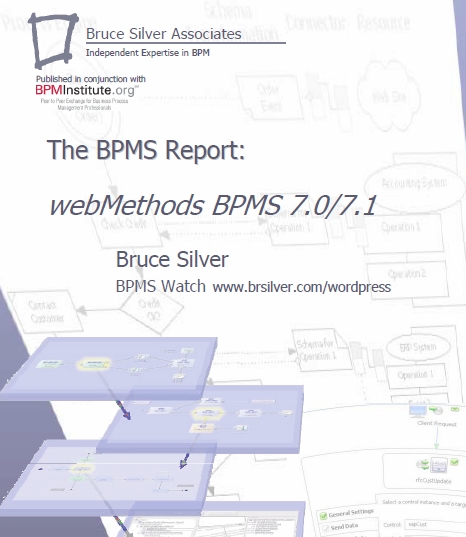
SoftwareAG/webMethods BPMS 7.0/7.1
Founded in 1996, webMethods was an early pioneer in the development of web services middleware for business integration, particularly for B2B commerce. More recently, the company evolved toward SOA infrastructure and BAM, and in the past year launched a comprehensive BPM Suite. Today BPM, SOA, Integration, and BAM form the key pillars of the webMethods platform, called Fabric 7.0. webMethods has over 900 employees and operates in 45 locations around the world, including development centers in US and India. In June 2007, the company was acquired by SoftwareAG of Darmstadt, Germany, creating the world’s largest independent provider of business infrastructure software. Following the transaction, SoftwareAG indicated that the webMethods BPMS will be sold and supported as the combined company’s sole BPM offering.
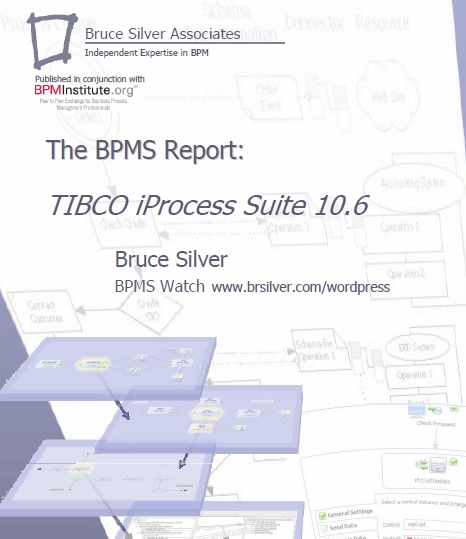
TIBCO iProcess Suite 10.6
TIBCO, a world leader in business integration tools and infrastructure software, entered the BPMS arena in 2004 with the acquisition of Staffware, a pioneer in human workflow automation. Since then, the company has integrated its BPM offering, called TIBCO iProcess, with its SOA platform (BusinessWorks and ActiveMatrix), in an initiative it calls BPM+, promising the ability to handle both human-centric and integration-centric processes in a single platform. Today, TIBCO claims BPM accounts for roughly one quarter of its total revenue of $517M (2006).
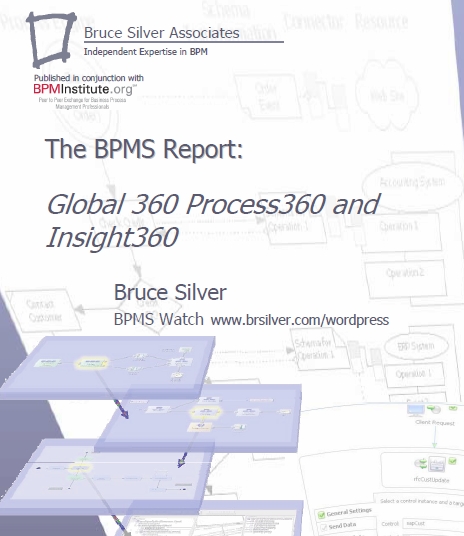
Global 360 and Insight360
Global 360, founded in 2000, is the result the merger of several experienced workflow, content management, and process modeling tool vendors. Headquartered in Dallas TX, the company has a large installed base of 2000 customers and FY06 revenue over $100 Million, built upon its heritage in the content and workflow markets. Global 360’s principal efforts today focus on BPM and what the company calls “process intelligence,” a form of BAM or operational business intelligence placed in a business process context. The process intelligence offering, called Insight360, is offered both standalone and as part of the BPM suite.
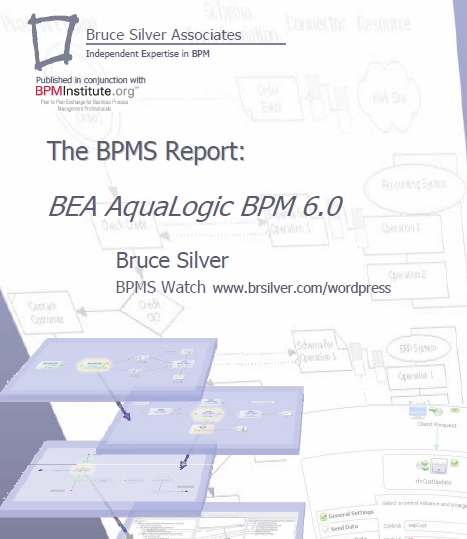
BEA AquaLogic BPM 6.0
Founded in 1995, BEA Systems, Inc. (NASDAQ: BEAS) is a world leader in enterprise infrastructure and middleware software. While BEA is best known for its BEA WebLogic® J2EE platform, its BPM strategy is actually based on the newer AquaLogic family of products. BEA AquaLogic® BPM (ALBPM), based on the acquisition of BPM pureplay Fuego in 2006, is part of the company’s Business Interaction Division, which also includes BEA’s Social Computing products (AquaLogic Ensemble, AquaLogic Pages and AquaLogic Pathways) together with AquaLogic Interaction, a family of portal and collaboration software based on the earlier acquisition of Plumtree Software. In 2006, BEA claims 100% quarter-to-quarter growth in BPM revenue, and BPM is now the fastest-growing segment of the company’s product portfolio.
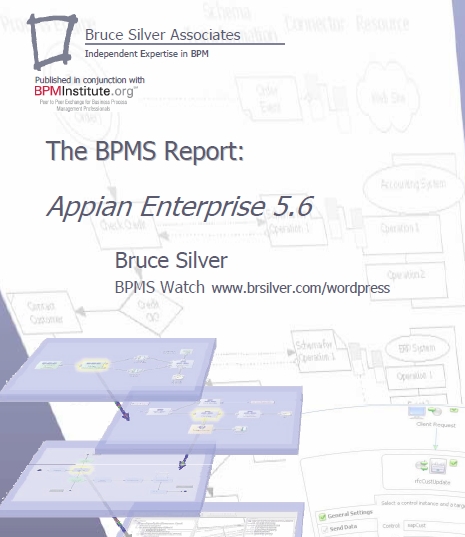
Appian Enterprise 5.6
Appian Corporation, headquartered in Vienna VA, is a fast-rising star in the pure-play BPMS universe. Founded in 1999, the company is entirely self-funded and claims to have been profitable throughout its life. Today, Appian boasts 120 customers and 216 employees, and was recently named to the Inc 500 list of fastest-growing private companies. Appian Enterprise, the company’s flagship offering, takes a broader view of BPM than most of its competitors. The company describes process as only one dimension of BPM, the others being analytics and knowledge management. Certainly, performance management (what Appian calls analytics) is a standard component of all BPM suites, but with roots at BI vendor Microstrategy, Appian’s founders have made it a focal point of the product’s technical architecture. Knowledge management, Appian’s catch-all term for collaboration, content management, and portal technology, is also included as part of the suite.
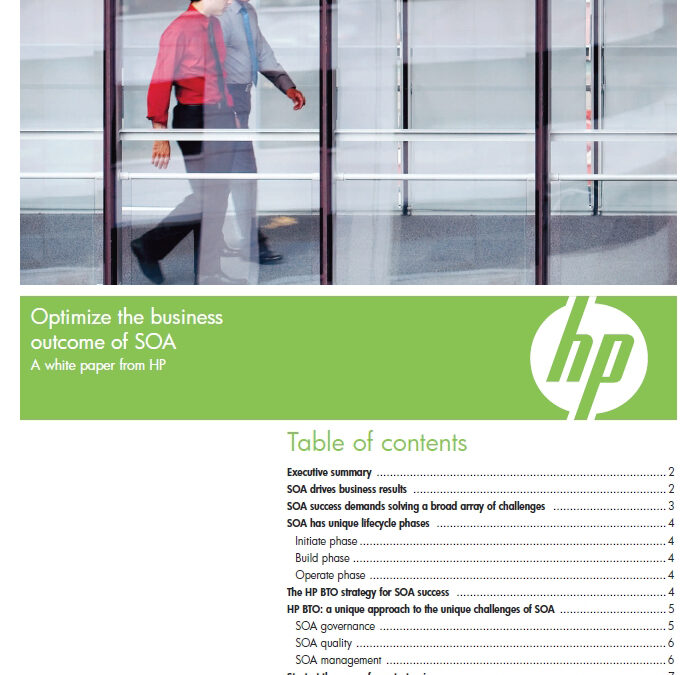
Optimize the Business Outcome of SOA
Gartner states that SOA requires new processes around governance, development and operation. Creating these new processes is clearly a risky endeavor. This whitepaper summarizes the business benefits of adopting SOA, the obstacles that must be overcome and HP’s approach to SOA. HP addresses the unique challenges of SOA across lifecycle, from planning to inception to deployment. HP combines an integrated solution for SOA governance, quality and management combined with services that take you from planning and management to successful deployment and management.
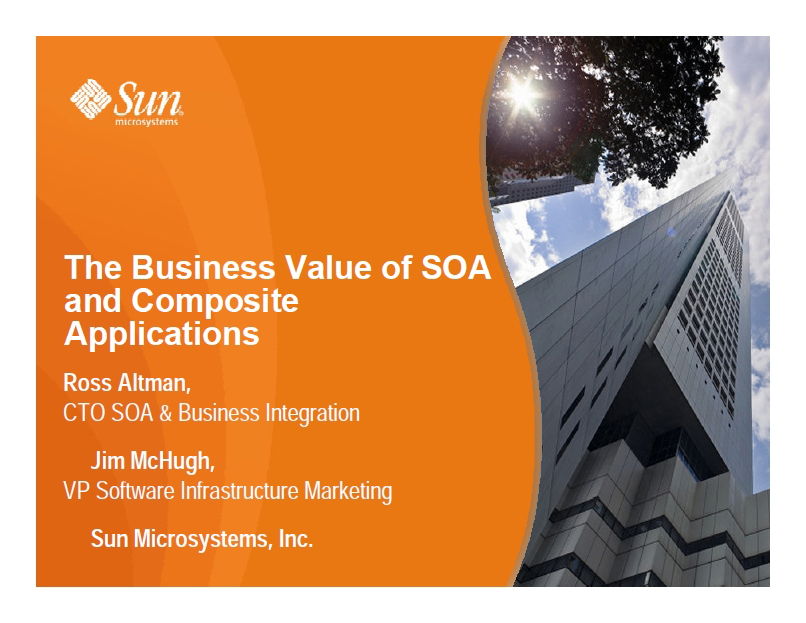
The Business Value of SOA and Composite Applications
A discussion of the business value of SOA and composite applications is actually two discussions. First, what is the business value of composite applications?
A discussion of the business value of SOA and composite applications is actually two discussions. First, what is the business value of composite applications? More specifically, how do composite applications help you streamline business processes, reduce operational costs, increase customer service responsiveness and better support the creation and delivery of new products and services?

Oh, the Tangled Web We Weave
Business Rule Management Systems (BRMS) coupled with commercial off-the-shelf (COTS) applications are prevalent today. Together and separately, they provide rapid and satisfactory solutions to particular problems in specific business areas. In fact, the most common use of BRMS today is for self-contained point solutions in a functional area of a business.

BPMS Watch: Understanding and Evaluating BPM Suites
BPM provides more than just a new way of measuring and understanding your business. It also delivers a new technology platform that is critical to realizing the innovation, efficiency, compliance, and agility that BPM promises. That platform, called a BPM Suite (BPMS), supports the complete process implementation lifecycle, from modeling to implementation design, execution, and business activity monitoring, with feedback to modeling for continuous performance improvement.
BPMS offerings have matured greatly in the past year or two. Today most provide a unified design













